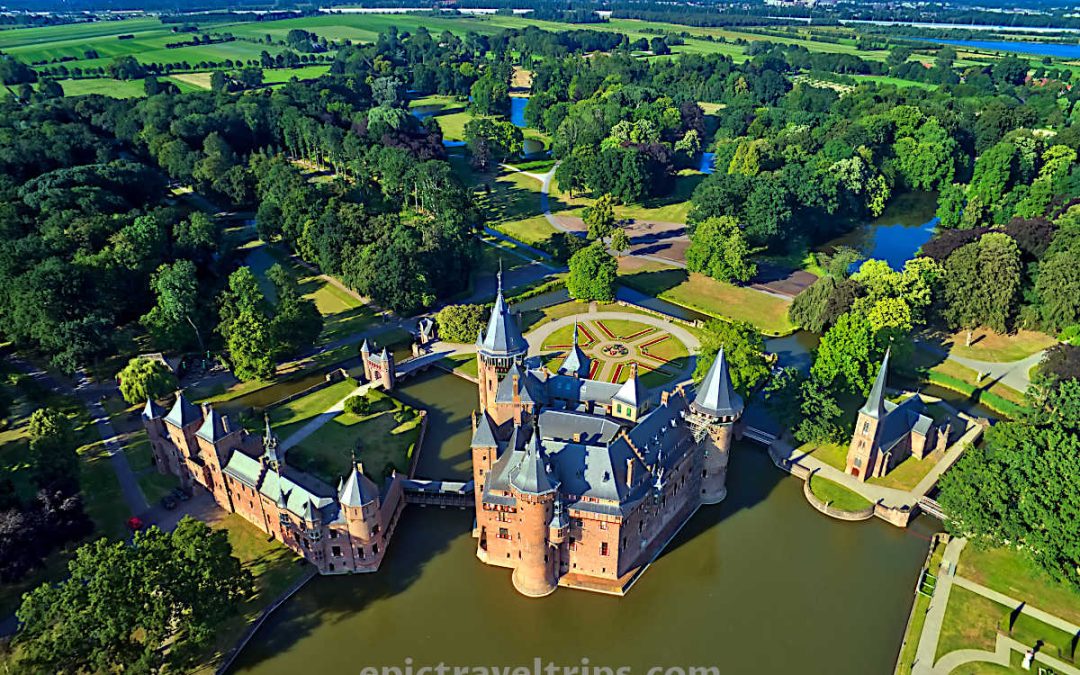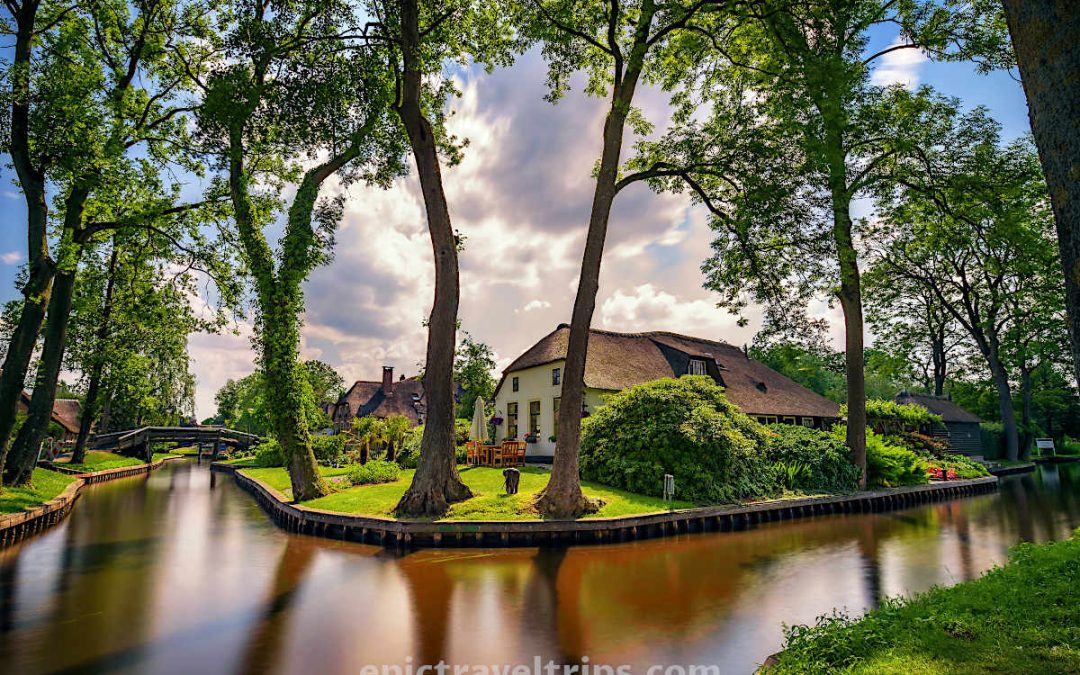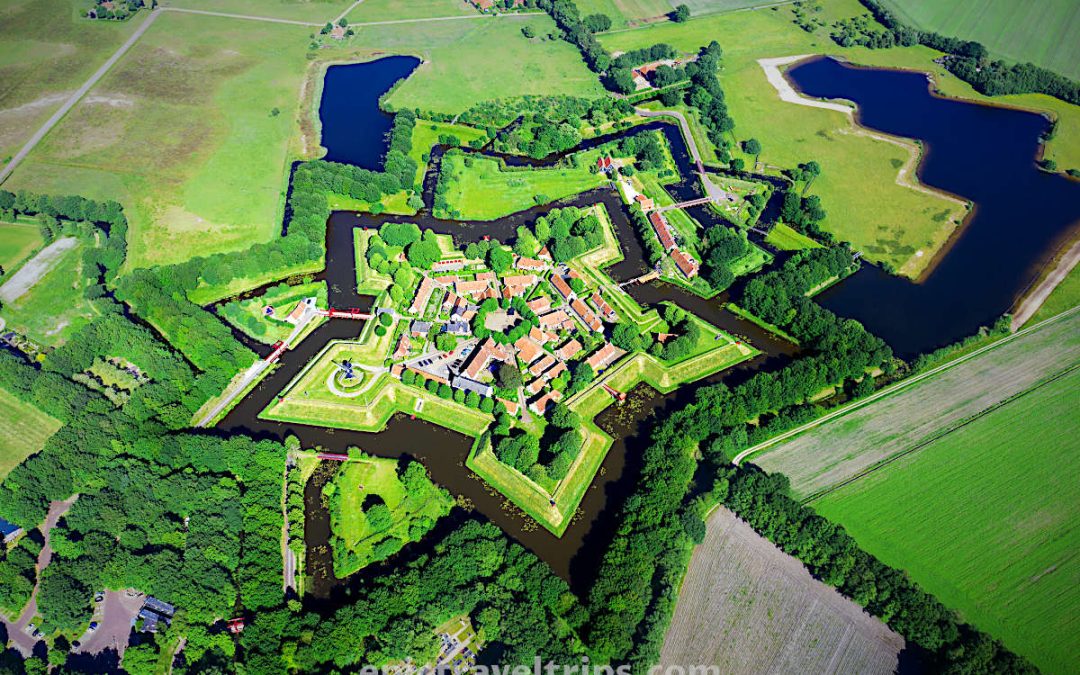- What Is
- What To See
- Zaanse Schans Windmills vs Kinderdijk
- Where is located?
- How To Reach?
- How Long Does It Take?
- Where To Park?
- When Is The Best Time To Visit?
- Where To Eat?
- Where To Stay?
- What Is Nearby?
- Zaanse Schans – Our Impressions
What is Zaanse Schans?
Zaanse Schans is a historical village best known for its colorful windmills. In addition, there are wooden houses, barns, a clog-making workshop, a spice warehouse, a cheese farm, museums, etc.
Zaanse Schans was part of our The Netherlands: Epic 10 Days for Perfect Itinerary Road Trip with Maps. So, we drew a Google Map of our trip and make your navigation easier.
What To See In Zaanse Schans
We passed by a few souvenir shops on our way to the windmills. On the left-hand side is a Clog Making Workshop with an oversized yellow clog in front of the black wooden building. We walked further and passed by two spots where we would return later. On the right-hand side is a cheese farm, and the bakery museum is on the left-hand side. Finally, we arrived at the path where we could explore and discover the main prizes, the windmills.
1 – Windmills
Around 600 windmills were constructed in this area around Zaanse Schans during a peak in the 17th century. There are dozen on the Zaan River nowadays, but a few are operational. We will mention five of them.

2 – De Huisman – Spice Warehouse
De Huisman’s windmill is a small one on the top of the house at the Zaan River bank. It is the first one we stumbled upon while coming from the entrance. Many do not notice this windmill by being distracted and looking to the right, where all the other windmills are. However, this windmill is small and unique due to the fact that it is a spice grinder.

3 – De Gekroonde Poelenburg – Saw Mill
De Gekroonde Poelenburg belongs to the paltrokmolen category and is a wood-sawing windmill. There was an enormous demand for wooden houses, boats, and ships in the past. Therefore, windmills such as Paltrokmolen existed. There was high demand for timber, timber trade, and timber sawing.
1869 is the built year of the De Gekroonde Poelenburg windmill in Koog aan de Zaan (not far away from Zaanse Schans). 1963 is the restoration year at the present location, Zaanse Schans. You can see these two years on the windmill’s beards or the date boards. Date boards were an outward sign of windmill owner prosperity.
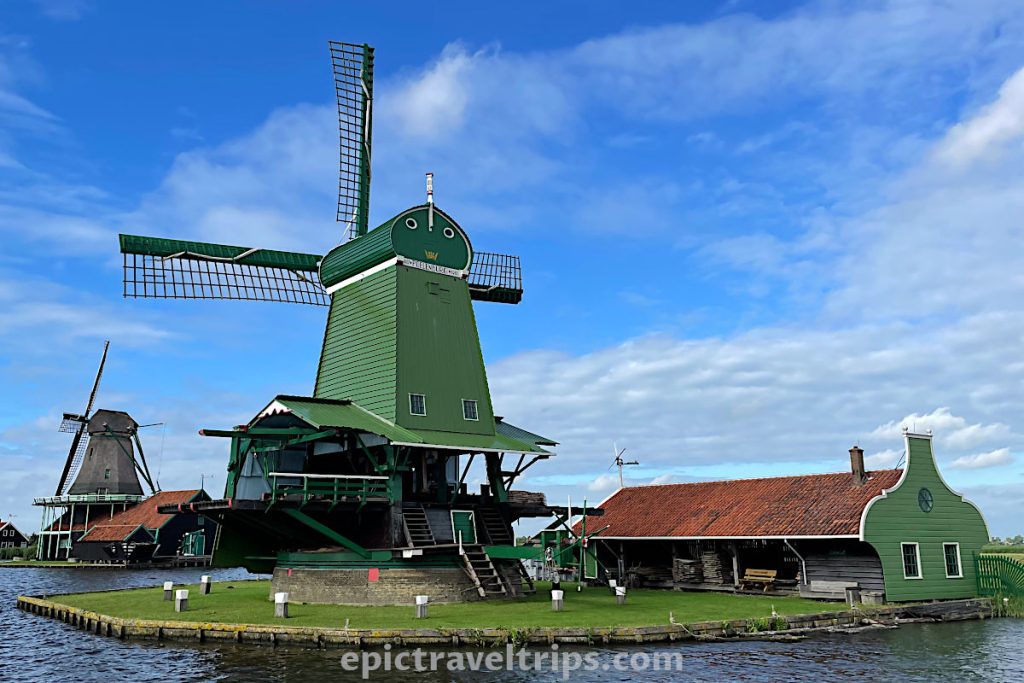
In our humble opinion, De Gekroonde Poelenburg is the most striking green color, the eye-catching, advanced, and modern designed windmill at Zaanse Schans. It is so different from the other windmills categories. Please notice a low brick base with a ring of wooden rollers that enables the whole windmill house to turn and adjust the sails in the wind direction.
4 – De Kat – Paint Mill
De Kat is an octagonal mill with a rotating cap and external gallery built on the housetop used as a paint factory. We can see the years 1781 and 1960 on the date boards. The first year is the built year, and the second is the partial restoration year. De Kat is the only remaining working windmill that makes the paint in the world.
We entered inside to see the process of grinding coloring materials and making paint powder. The mill produces chalk, pigments, and oils apart from the paint.

| Ticket | Price € |
|---|---|
| Adults | € 5,00 |
| Children 6 – 12 | € 2,50 |
| Groups (of 10 persons) | € 4,00 |
| Family card | € 12,00 |
*Please take this price list as an estimate

5 – De Zoeker – Oil Mill
De Zoeker is beilvied to be a polder drainage mill as we saw at Kinderdijk near Rotterdam. However, the mill’s usage changed. It is the oil mill nowadays and still produces. The mill presses seeds such as linseed and rapeseed into vegetable oil.
We can see on the date boards Anno 1672, which is the year when it stood at Zaandijk as an oil mill. However, many believe the built year was around 1610 when it was a polder drainage mill.
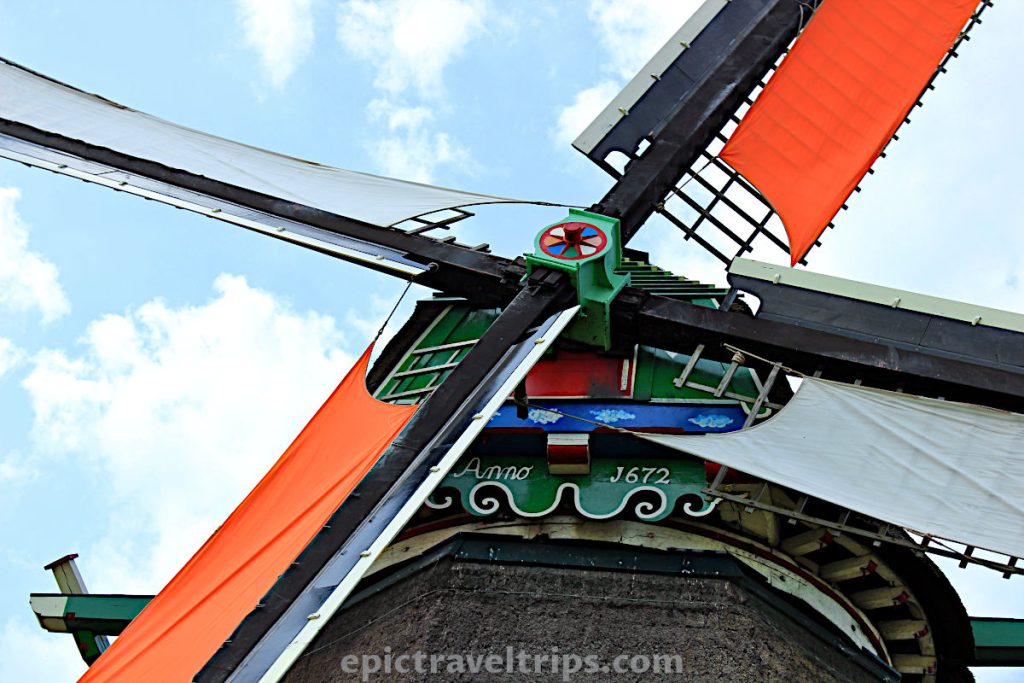
| Ticket | Price € |
|---|---|
| Adults | € 5,00 |
| Children 6 – 12 | € 2,50 |
| Groups (of 10 persons) | € 4,00 |
| Family card | € 12,00 |
*Please take this price list as an estimate

6 – Het Jonge Schaap – Saw Mill
Het Jonge Schaap is a six-sided, over-wheeling wood sawmill and another extraordinary mill at the Zaanse Schans. The mill got its name after its shape, which resembles a young sheep. The original mill is from the year 1680. However, it was demolished in 1942. Mill enthusiasts built this replica between 2005 and 2007 based on detailed drawings of the original mill made by Anton Sipman.
| Ticket | Price € |
|---|---|
| Adults | € 5,00 |
| Children 6 – 12 | € 2,50 |
| Groups (of 10 persons) | € 4,00 |
| Family card | € 12,00 |
*Please take this price list as an estimate

7 – Tradition In Windmills – Windmillers Signals
Did you know that millers can communicate with each other by positioning sails at a certain angle when a windmill is not in production? Even WWII ally pilots got information on what happened in occupied Holland when flying over the La Manche channel.
8 – Why Do Windmills Turn Counterclockwise?
The explanations are simple if you have ever been a sailor on a sailing ship. We explained that already so needless to repeat ourselves.
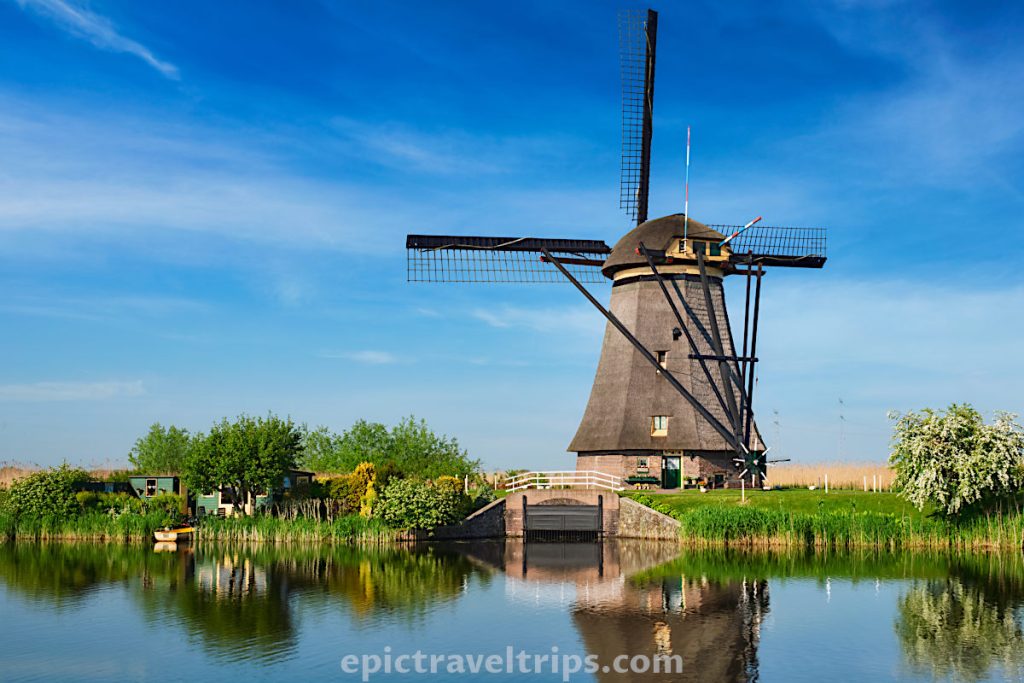
9 – Clog Making Workshop At Zaanse Schans
At Zaanse Schans, visitors can witness the traditional Dutch craft of clog-making. The craftsmen used the same techniques for centuries. In addition to watching the clog-making process, visitors can visit The Clog Museum in nearby Zaandam to learn more about the clogs’ history and cultural significance. For those interested in a hands-on experience, there are workshops available where participants can learn how to make their pair of clogs.

Or you can take photos surrounded by clogs in different colors, shapes, forms, and enormous size differences.

10 – Cheese Farm “Catharina Hoeve”
Catharina Hoeve Cheese Farm is an authentic 17th-century cheese farm. The farm showcases Dutch tradition and its connection with cheese, offering different types of cheese ranging from cow cheese to goat cheese.
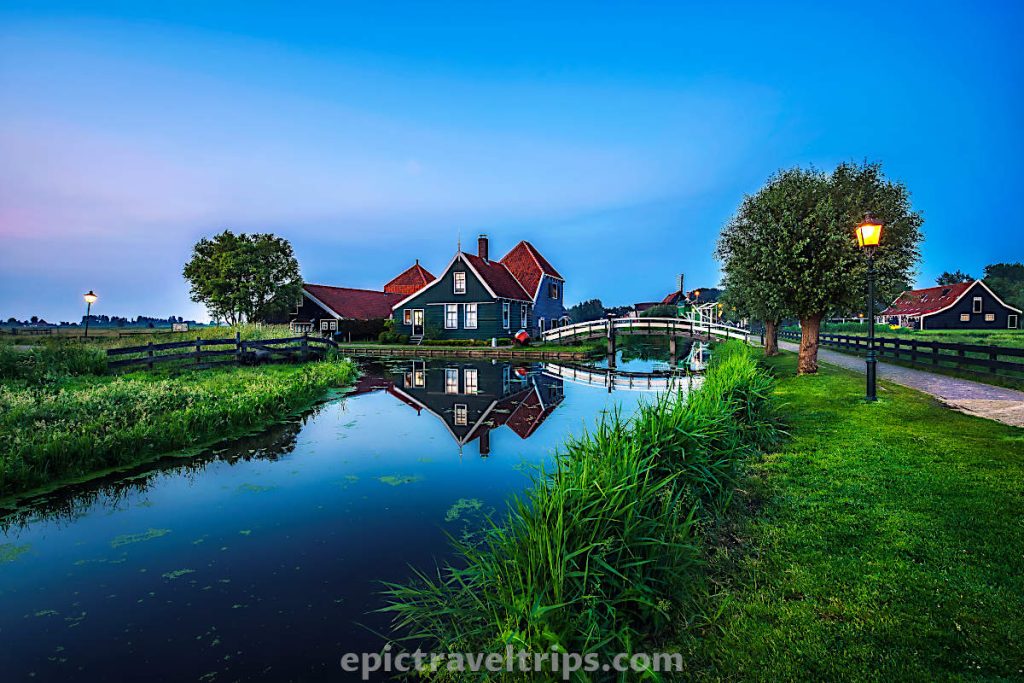
11 – Bakery Museum “The Gecroonde Duyvekater”
In the Gecroonde Duyvekater Bakery Museum is a charming house dating back to 1658. The bakery features an authentic Dutch bakery with antique baking equipment from the 19th century. Visitors can learn about the history of Dutch baking. Besides, you can see how to make traditional Dutch bread, such as Duyvekater.

Zaanse Schans Windmills vs Kinderdijk
The first windmills in the Netherlands appeared in the 12th century. The peak was in the 19th century. There were around nine thousand windmills all over the country. The windmills have different functions. Here we will focus on windmills between Kinderdijk and Zaanse Schans.
Kinderdijk and Zaanse Schans Windmills use wind energy to transfer into work. Here is where the similarities end and begin the difference in functionality.
Zaanse Schans Windmills
We look at Zaanse Schans Windmills as an industrial park and each windmill being a factory. Corn mills ground the grain. Sawmills sawed the wood, other industrial mills pressed and made paper (paper mills), oil mills produced oil, fulling mills, and many others.
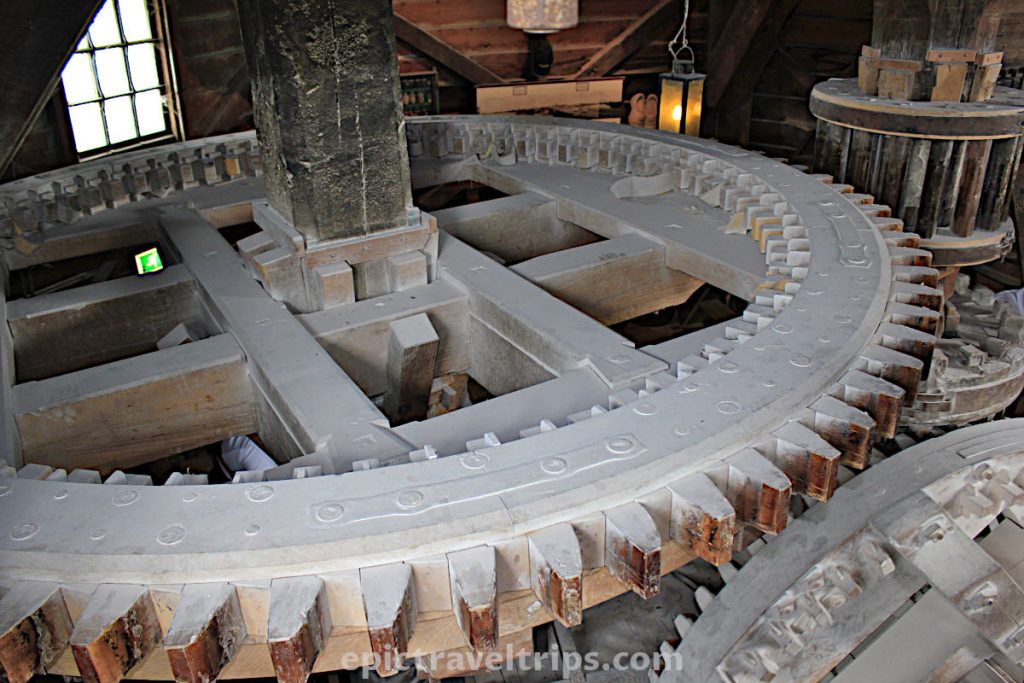
Kinderdijk Windmills
Kinderdijk windmills use wind energy to transfer with beams, shafts, and gears into a pump device with a scoop wheel at the end. The scoop wheel pushes the water under the mill from the lower-level polders into the higher-level basin. The network of windmills and canals creates the whole system for water management and lifts the water in stages.
The polder water from the lowest level pumps by lower mills into the lower basin (ring canal or ring dyke), and the middle mills further pump up the water into an intermediate basin. Finally, upper mills pump the water from the intermediate basin into waterways, rivers, or directly into the sea.

Archimedean screw replaced old scoop wheels due to more efficiency. The modernized windmills pumped the water much higher than the scoop height of older windmills. This invention made it possible to drain much deeper lakes without creating a ring of dykes around the lake and lifting the water in stages.


Where Is Zaanse Schans Located?
Zaanse Schans is a neighborhood of Zaandam, near Zaandijk, just 20 km (12.4 mi) north of Amsterdam and 20 minutes drive. We drew Google Maps so you can easily navigate.

How To Reach Zaanse Schans?
By car:
On our second visit to Zaanse Schans, we came by car, and it was interesting especially when some sections highway widened to 5+ lanes. We must emphasize that in The Netherlands are ecological driving rules with a restricted speed limit. The daytime (06:00-19:00 h) limit has been restricted to 100 km/h (62 mph), while the general limit on motorways is 130 km/h (80 mph).
Here are few practical info about distances, time travel, and roads:
- Amsterdam – Zaanse Schans, 20 km (12.43 mi), 20 minutes drive, highways A10, A8, and local road N515
- Rotterdam – Zaanse Schans, 86 km (53.44 mi), 1h 10 minutes drive, highways A4, A5, A10, A8, and A7 and local road N515
- Eindhoven – Zaanse Schans, 145 km (90.1 mi), 1h 50 minutes drive, highways A2, A10, A8, and local road N515
- Groningen – Zaanse Schans, 188km (116, 8 mi), 2h 10 minutes drive, highway A7, and local road N515
- Volendam – Zaanse Schans, 25km (15.5 mi), 25 minutes drive, local roads N244, N247, N517, highway A7, and local road N515
By bus:
On our first visit to Zaanse Schans, we took a local bus from Amsterdam Central. Bus number 391 takes about 50 minutes from Amsterdam Central Railway Station to Zaanse Schans.
The best ticket option is Amsterdam Travel Ticket for 1, 2, or 3 days with prices € 18, € 24, and € 30 respectively. It can be used for unlimited travel in Amsterdam by train, tram, bus, metro, ferry, and Amsterdam airport express.
If you click this link and make a purchase, we earn a commission at no additional cost to you.
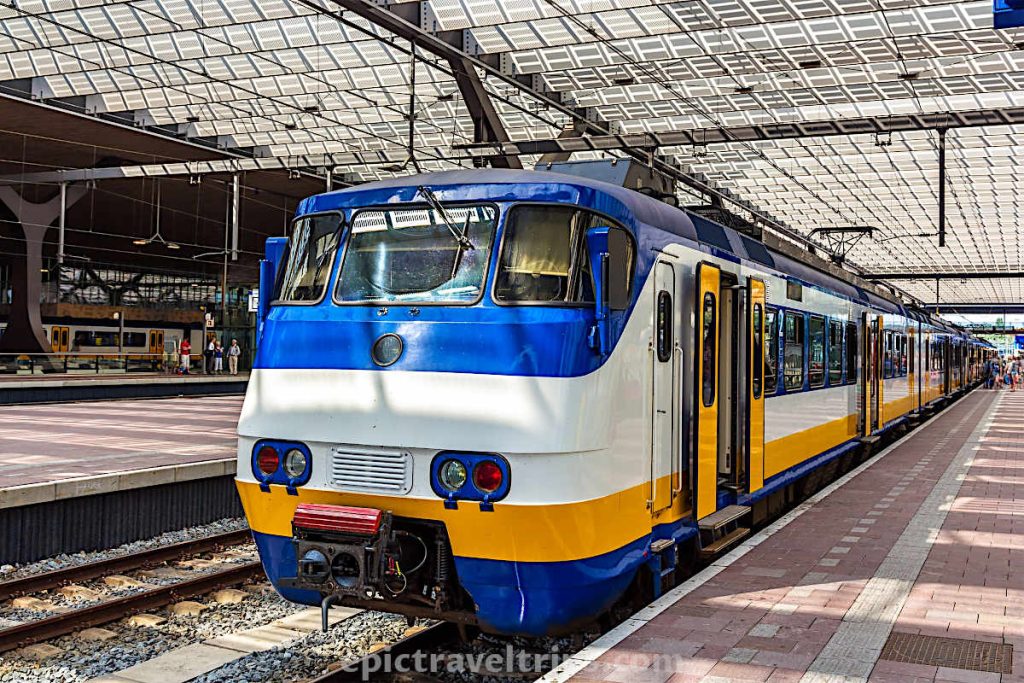
By train:
There is a train from Amsterdam Central Railway Station and exit at Zaandijk Zaanse Schans (direction to Uitgeest). It takes 35 minutes but includes a bit of walking from the Railway station to Zaanse Schans.
By airplane:
The closest international airport is Schiphol. Train and bus are the affordable and convenient transport options to reach the Amsterdam Center. After you exit the gate just follow the signs to Schiphol Plaza and you are on the right track. From the airport take the train and switch to a bus or another train as we described above. It takes around 14-17 minutes to reach Amsterdam Central Railway Station from the airport.
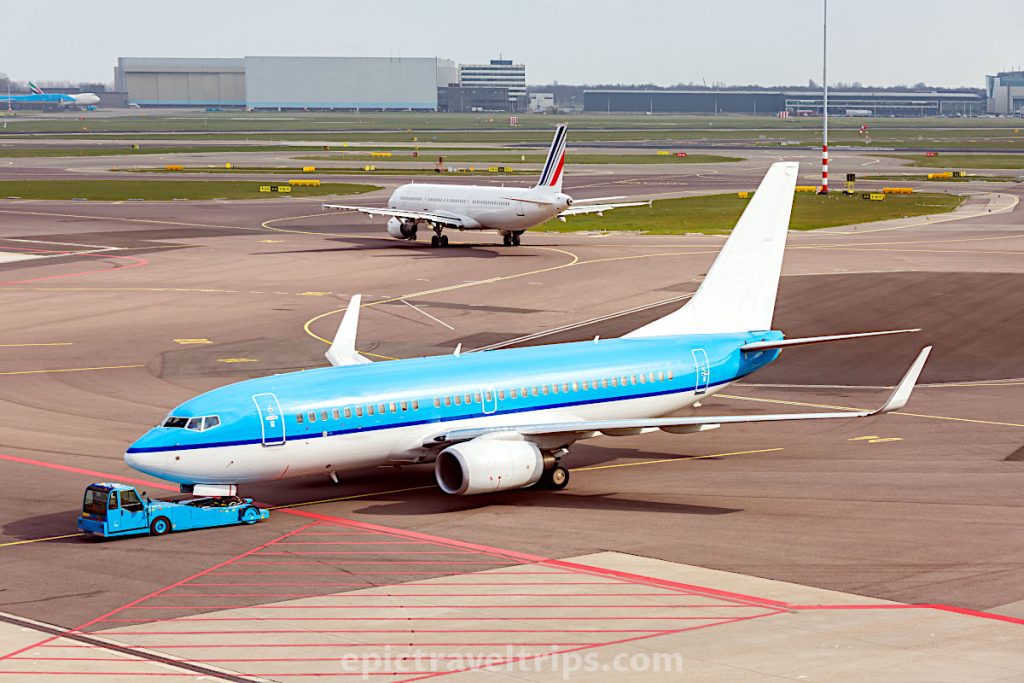
How Long Does It Take Zaanse Schans Visit?
Zaanse Schans’ visit is the best as a day trip from Amsterdam. However, you do not need a whole day to enjoy and visit many of the attractions in the area. 5-6 hours are more than enough. It is up to you to enjoy it as much as you can and want in the end.
It is a unique attraction, and the more spend time, the more memories you will take with you.

Where To Park For Zaanse Schans Visit?
The buses, coaches, campers, cars, and motorcycles park lot is near the Zaans Museum.
Address: Schansend 7 in Zaandam.
Capacity (bus): 25 bus spaces
Capacity (cars): around 160 car spaces
Walking time to the windmills: 5 minutes
Headroom: N/A
Opening hours: 08-19:00
Rates: €11 – € 15, per day for cars depending on the season
We came late, took the parking ticket, and parked near the museum. When we returned and wanted to pay, someone locked the payment parking booth. So we were not able to pay for our parking. The only option was to drive in and see what would happen. So we did that, and the parking gate automatically opened, and we drove out. It looks like we got a “free ride”.

When Is The Best Time To Visit Zaanse Schans?
You can visit Zaanse Schans Windmills all year round. The high season is between April and November. Almost all the attractions are open between 10-17. But, all windmills aren’t visitable each day during the low season.
Most Dutch families have vacations during the Dutch summer school holiday (mid-July to the end of August). This period is the peak summer season.
On our first visit to Zaanse Schans, we did it at the beginning of June. The second visit was in mid-July during our summer vacation. Both visits were great, and we would be glad to return anytime.
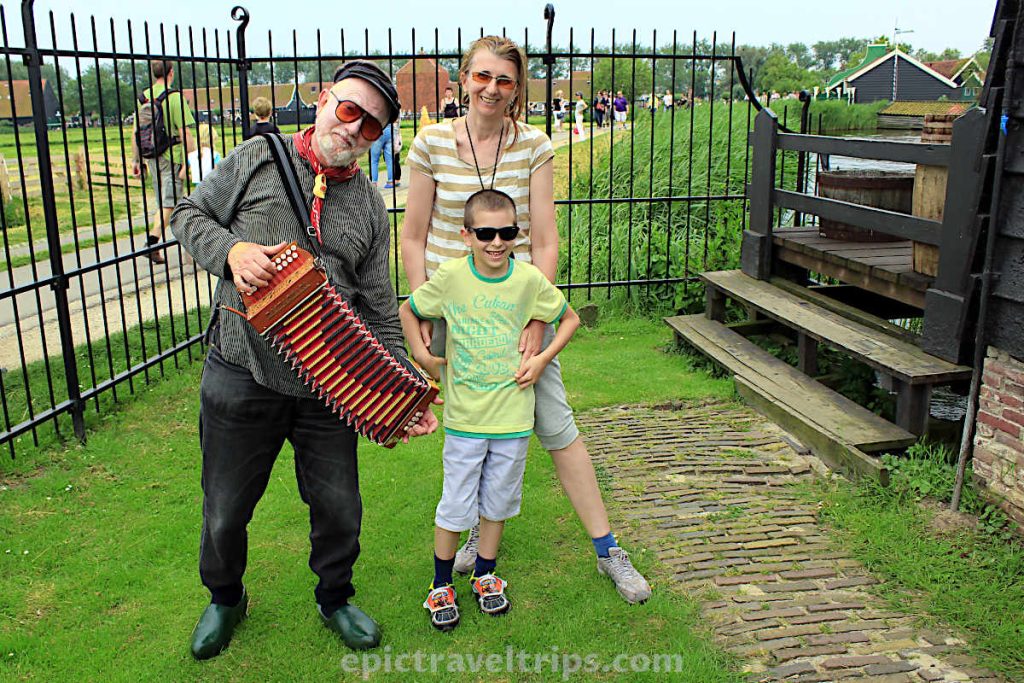
Where To Eat?
Within Zaanse Schans, we saw several restaurants De Kraai (near the Clog Making Workshop), De Hoop op d’Swarte Walvis (near the River Zaan), and the Museum café.
Please taste Kibbeling if you can, fried fish pieces with fries, salad, and sauces.

Where To Stay?
We visited Zaanse Schans twice. On our first visit, we stayed at B&B Hotel Amsterdam-Zaandam very close to the Zaanse Schans. This is a budget hotel and we were satisfied staying there.
On our second visit, we had accommodation for one hour from Zaandam since we were on a car tour in the Netherlands.
We stayed in this lovely thatch roof bungalow near Ermelo as our base for exploring Giethoorn, Zaanse Schans Windmills, Volendam, and Marken village.
If you click this link and make a purchase, we earn a commission at no additional cost to you.
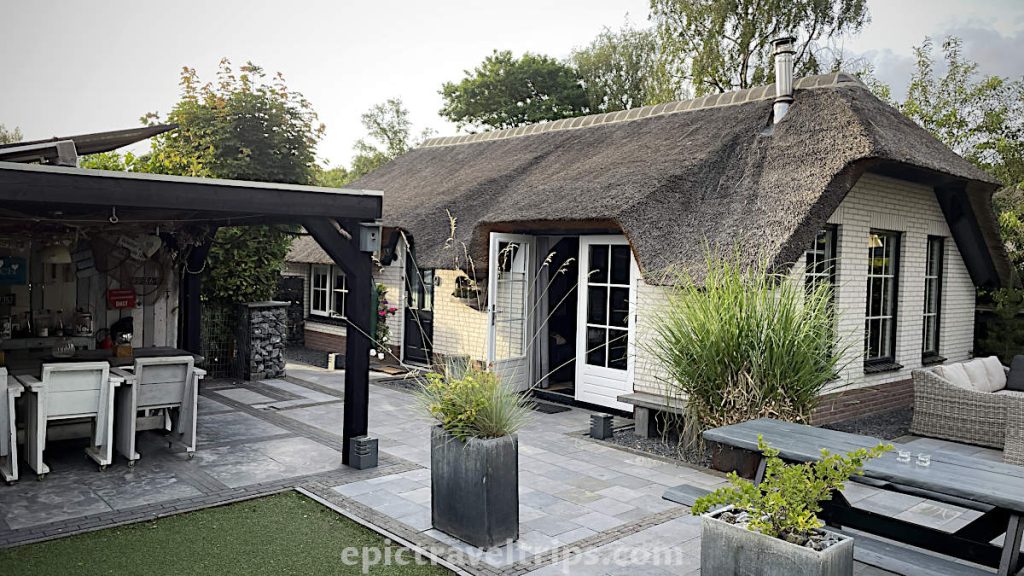
What Is Nearby Zaanse Schans?
We are at the apex of our The Netherlands: Epic 10 Days for Perfect Itinerary Road Trip with Maps and a new day is a new opportunity to go even beyond the zenith. We are so glad to recommend you the following suggestions.
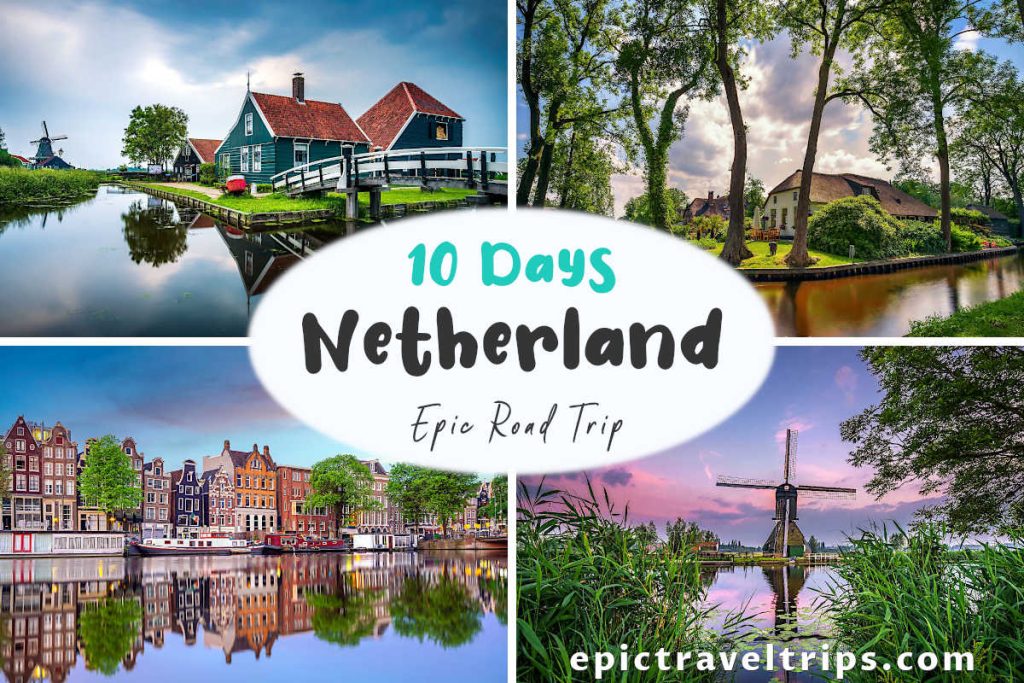
Amsterdam
You will most likely visit Amsterdam and then come to Zaanse Schans Windmills as a day trip, then vice versa. Amsterdam is the capital, the biggest city in the Netherlands, and a must-see location. Amsterdam’s canals, architecture, tall narrow brick buildings, and rich day and nightlife are just a few reasons to visit it.
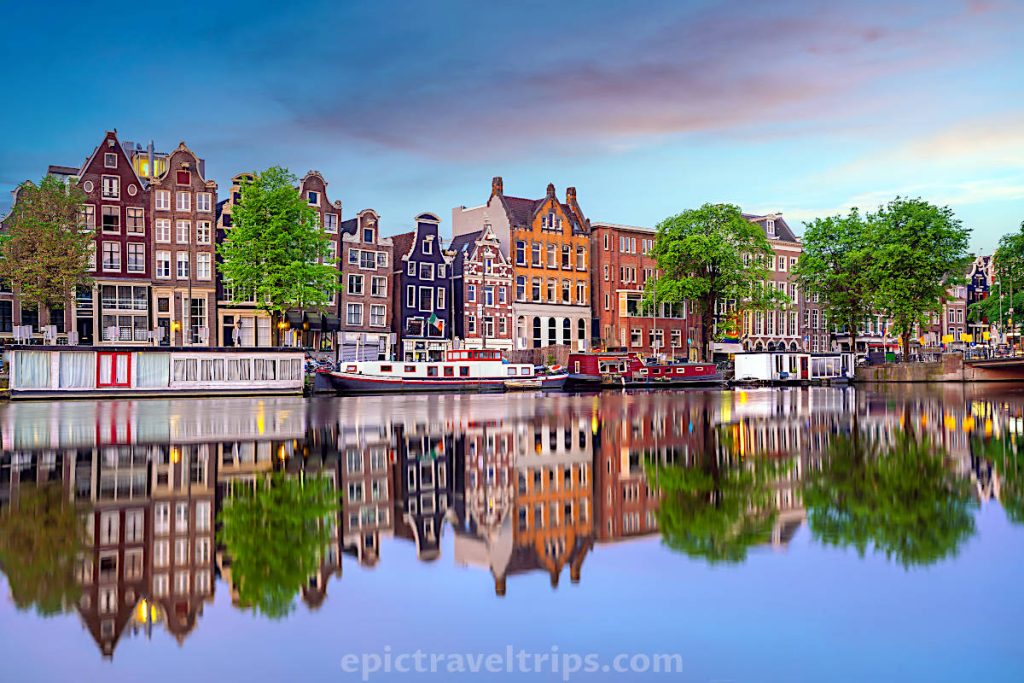
Volendam & Marken
Volendam and Marken are two picturesque villages 20 km (12.4 mi) and 20 minutes drive north-east from Zaanse Schans. Both are suitable for a day trip from Amsterdam. The villages are known for colorful wooden houses, drawbridges, and picturesque corners.

De Haar Castle (Kasteel de Haar)
Kasteel de Haar was our next stop after Zaanse Schans Windmills on a road trip through the Netherlands. It was a perfect attraction for comparing the impressions between castles and fort/fortresses since we visited Fort Bourtange on our first day in The Netherlands.
De Haar Castle is the largest castle in the Netherlands outside Utrecht and a half-hour drive from Amsterdam. It is relatively new after being rebuilt in the 19th century. Its walls hide the flamboyant castle’s owners’ lives and extravagant history, especially in the 1950s.

Windmills At Kinderdijk
Kinderdijk is not close to Amsterdam and Zaanse Schans, but since Kinderdijk is very similar to Zaanse Schans, it is worth mentioning and visiting. Although, we admit with different functionality…

Giethoorn Village
We came to Zaanse Schans from Giethoorn village, so although, over an hour’s drive, it is worth mentioning.
Giethoorn is a picturesque village due to its waterways, canals, and beautiful thatched farms built on small peat islands connected by over 170 small wooden bridges. We took the canals boat trip to see the sights.

Zaanse Schans – Our Impressions
We knew that The Netherlands is a country of windmills, but we assumed that grinding wheat or corn into flour was the only windmills usage. After visiting Zaanse Schans, we found that each windmill was a small factory. Sawing wood, grinding spices, paint production, seed pressing & edible oil production were just a few usages. After visiting Kinderdijk Windmills, we learned further about polder drainage mills and water management systems developed by windmills.
Windmills are even more aesthetically pleasing landscape elements that bring dynamics to otherwise boring flat terrains. So painters can draw appealing paintings, writers & poets can describe them colorfully in their poems and works of literature, photographers can take mesmerizing landscape photos, and more. We are so happy that we visited this location twice and would have returned every time we have the opportunity to do.
We noticed extraordinary facts when we looked and the photos from our first visit and compared them with the ones from our second visit. On the first visit, our son was a boy. On the second visit, he was a teenager. What a sentimental value.
We wish you an epic trip!



